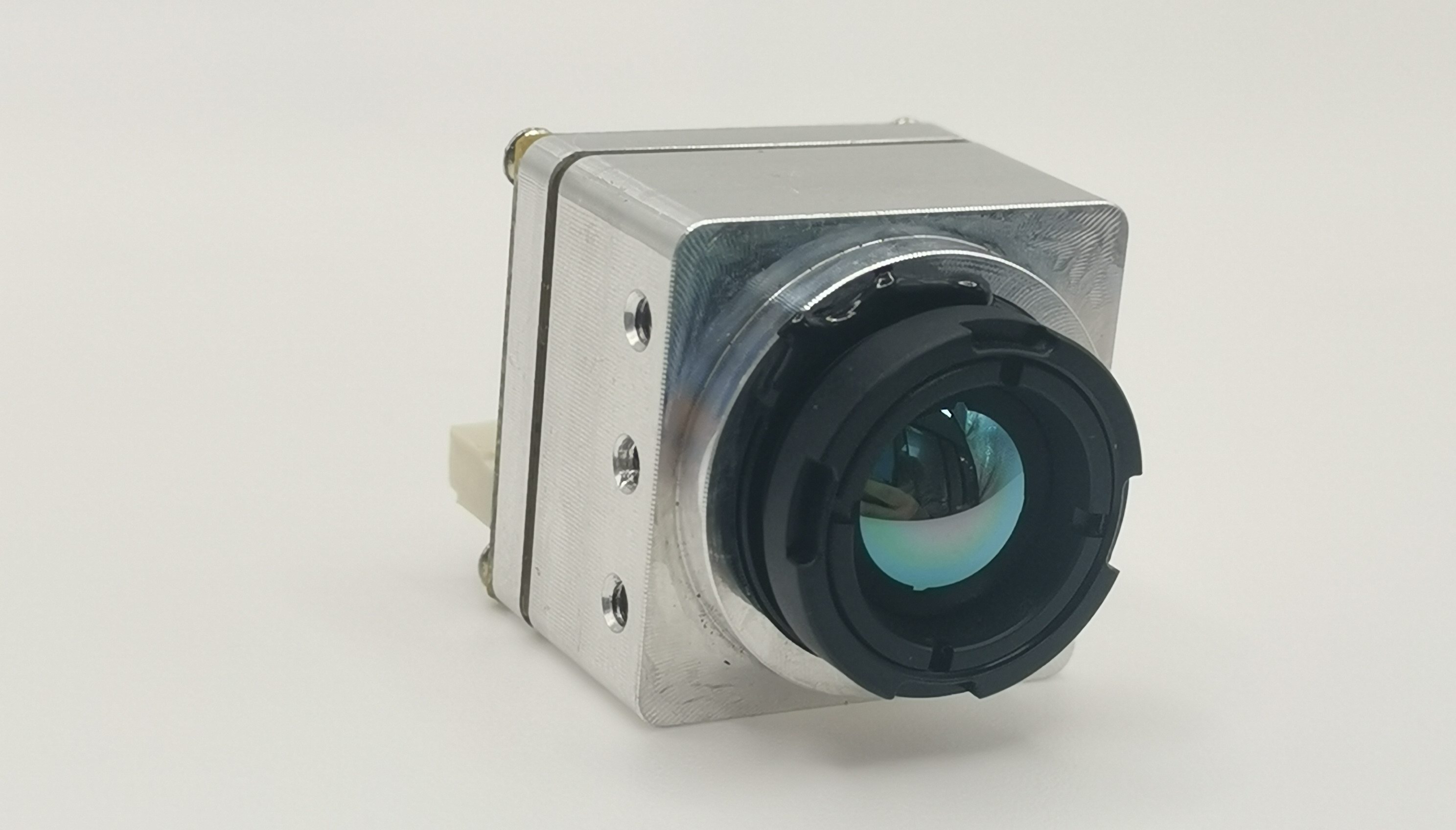Analog FPV Thermal Camera: A Game-Changer in Drone Technology and Surveillance Systems

Introduction to Analog FPV Thermal Cameras
Understanding the Basics of FPV and Thermal Imaging
Firstly, it's essential to grasp the concept of FPV. FPV, or First Person View, refers to the method used to control a drone or other remote-controlled vehicle from the pilot's perspective. This technology allows the operator to navigate the vehicle as if they were onboard, providing a real-time view from the vehicle's vantage point.
Moving on to thermal imaging, it involves capturing the heat emitted by objects and converting it into visible images. Unlike traditional cameras that rely on visible light, thermal cameras detect infrared radiation, allowing them to produce images in low-light or no-light conditions.
The Evolution of Thermal Cameras in Technology
The evolution of thermal cameras has been remarkable, transitioning from exclusive military use to widespread civilian applications. Initially developed for military reconnaissance and surveillance purposes, thermal imaging technology has significantly advanced and become more accessible for civilian use.
Advancements in thermal imaging technology have led to smaller, more affordable devices with improved image quality and resolution. These developments have expanded the potential applications of thermal cameras beyond traditional military and law enforcement uses.
Exploring the Capabilities of Thermal Cameras in Drones
Thermal cameras integrated into drones offer a myriad of capabilities, revolutionizing the fields of night vision, surveillance, and search and rescue operations.
Enhancing Night Vision and Surveillance
The Role of Thermal Cameras in Night Operations
Analog FPV thermal cameras play a pivotal role in enhancing night vision capabilities for drones. By detecting heat signatures emitted by objects, these cameras enable drones to navigate and gather intelligence even in complete darkness. This capability is particularly valuable in law enforcement and security operations where visibility is limited.
Applications in Security and Surveillance
The integration of thermal cameras with drones has expanded the applications of surveillance systems. Drones equipped with thermal imaging technology can monitor large areas from an aerial perspective, detect unauthorized movement or intruders, and provide real-time situational awareness to security personnel. This advancement has significantly bolstered the effectiveness of security measures in various environments.
Improving Search and Rescue Missions
Locating Individuals in Challenging Conditions
In search and rescue missions, analog FPV thermal cameras are instrumental in locating individuals in challenging conditions such as dense forests, mountainous terrain, or during adverse weather conditions. The ability to detect body heat signatures allows rescue teams to swiftly identify and locate missing persons, expediting life-saving efforts.
Case Studies: Success Stories in Search and Rescue
Numerous success stories highlight the efficacy of thermal cameras integrated into drones for search and rescue missions. For instance, a recent case involved the swift detection and rescue of hikers lost in a remote wilderness area during nighttime. The use of thermal imaging technology enabled rescuers to pinpoint their location accurately, leading to a successful retrieval operation.
Real-World Applications of FPV Thermal Cameras
As the capabilities of FPV thermal cameras continue to expand, their real-world applications extend beyond traditional surveillance systems, paving the way for advanced monitoring and future innovations.
Surveillance Systems: Beyond the Basics
Advanced Surveillance in Urban and Rural Areas
The integration of thermal cameras into surveillance systems has ushered in a new era of advanced monitoring capabilities in both urban and rural areas. In urban settings, these cameras provide enhanced visibility during nighttime, enabling law enforcement agencies to detect suspicious activities and monitor high-traffic areas with heightened precision. Moreover, in rural environments, thermal cameras play a crucial role in wildlife conservation efforts by facilitating non-intrusive monitoring of animal populations and detecting poaching activities.
The Impact on Privacy and Ethical Considerations
While the deployment of thermal cameras offers significant benefits for surveillance and security purposes, it also raises important considerations regarding privacy and ethics. The use of thermal imaging technology for pervasive surveillance may encroach upon individuals' privacy rights, necessitating clear regulations and guidelines to govern its ethical use. Striking a balance between leveraging the advantages of thermal cameras for public safety while respecting privacy rights remains a critical aspect of their widespread adoption.
The Future of Drone Technology with Thermal Imaging
Innovations on the Horizon
Looking ahead, ongoing advancements in drone technology integrated with thermal imaging are poised to revolutionize various industries. Future innovations may include the development of autonomous drones equipped with intelligent thermal imaging systems capable of identifying specific heat signatures associated with potential hazards or anomalies. Additionally, advancements in data analytics and machine learning algorithms are expected to enhance the predictive capabilities of thermal cameras, enabling proactive risk mitigation strategies across diverse sectors.
The Role of Thermal Cameras in Emerging Technologies
The integration of Seek Thermal and other cutting-edge thermal imaging solutions into emerging technologies holds immense potential for transformative applications. From precision agriculture utilizing thermal imaging for crop health assessment to infrastructure inspection leveraging drone-mounted thermal cameras for early detection of structural defects, these technologies are set to redefine operational efficiencies across multiple domains. Furthermore, as smart city initiatives gain momentum, the incorporation of thermal camera networks into urban planning frameworks is anticipated to bolster public safety measures while optimizing resource allocation.
Conclusion: The Future of Surveillance and Drone Technology
As the utilization of thermal cameras in drone technology continues to expand, it is evident that these advancements are reshaping the landscape of surveillance and aerial reconnaissance. The implications of integrating FPV thermal cameras with drones extend far beyond their current applications, paving the way for a future characterized by enhanced operational capabilities and innovative technological developments.
Summarizing the Impact of FPV Thermal Cameras
Key Takeaways
The integration of thermal cameras into drone technology has redefined the possibilities for night vision operations, surveillance systems, and search and rescue missions. By harnessing the power of thermal imaging, drones equipped with Seek Thermal and similar cutting-edge solutions have transcended traditional limitations, enabling unprecedented visibility in low-light conditions and providing invaluable insights for various industries.
Moreover, the accessibility and affordability of advanced thermal camera technology have democratized its usage across diverse sectors, empowering professionals in law enforcement, security, infrastructure inspection, wildlife conservation, and more to leverage its benefits for improved operational efficiency.
The Continuing Evolution of Thermal Imaging
The evolution of thermal imaging technology is an ongoing journey marked by continuous innovation and refinement. As research and development efforts persist, we can anticipate further enhancements in image resolution, temperature sensitivity, and real-time data processing capabilities. These advancements will not only elevate the performance of thermal cameras but also expand their potential applications across emerging fields such as precision agriculture, environmental monitoring, and disaster response.
Looking Ahead: What's Next for Drone Technology?
Predictions and Emerging Trends
Looking ahead, the future trajectory of drone technology integrated with thermal imaging holds promise for transformative advancements. Forecasts indicate a proliferation of autonomous drones equipped with intelligent thermal imaging systems capable of autonomously identifying heat signatures associated with potential hazards or anomalies. This predictive capability will revolutionize proactive risk management strategies across industries ranging from infrastructure maintenance to public safety.
The Role of Continuous Innovation
Innovation stands as a cornerstone in shaping the future landscape of drone technology integrated with thermal imaging. Continuous research endeavors aimed at refining thermal imaging algorithms, enhancing data analytics capabilities, and optimizing hardware integration will drive unprecedented progress in this domain. The seamless fusion of state-of-the-art Seek Thermal solutions with evolving drone technologies will unlock new frontiers in aerial reconnaissance while fostering sustainable advancements in surveillance systems.
Contact Us: Ms. Coco Huang
E-mail: sales@iasun.cn
WhatsApp/Wechat: +86 13510421923

